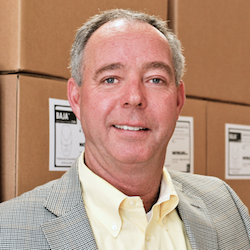
Invariably, when we discuss water reduction strategies, whether they be in a home, office building, hospital or senior living/long-term care facility, many of the same suggestions are repeated. Among these often-heard suggestions are the following:
- Take shorter showers
- Look for plumbing leaks
- Never use a toilet as a wastebasket
- Water lawns in the evening
- Install aerators in faucets
Although these all are worthy ideas, there are many other steps that a senior living, medical or long-term care facility can take that can reduce water consumption considerably. And although some will require an investment, others are free.
|
Older people, especially those with diabetes, mild to serious urinary tract or bladder infections, tend to get up more often at night to urinate. When this becomes excessive — more than once or twice per night — it is referred to as nocturia. Although it should be investigated, often nocturia is viewed as more of an inconvenience for the individual than anything else. The problem with it, when it comes to water consumption, is when long-term care patients flush after each use. Encouraging patients to not flush, or for men, to use a no-water urinal, can help reduce water consumption.
|
For instance, simply installing signs throughout the community reminding staff, residents and visitors of the need to reduce water consumption can have a significant effect. According to a study published in April 2016, when signs are placed in restaurant restrooms reminding staff to wash their hands, it has a psychologic effect that improves the odds that everyone washes their hands — staff and guests. Apparently, the presence of such a sign causes people to think someone might be watching them, and this encourages everyone to comply.
Other suggestions:
Modify mechanical replacement schedules. Alhtough this suggestion has cost implications, it also may produce enough savings to offset those costs. Many larger corporations have a replacement schedule for such things as cooling systems (about 10 to 12 years), refrigerators (7 to 10 years), water heaters (7 to 10 years), etc. If it is a water-using device, now is a good time to modify those schedules. Today, these products are on the top of the list when it comes to new technologies, especially water-saving technologies, so instead of swapping out cooling systems that use water, for instance, every 12 years, bring that down to about eight.
Modify bathroom fixture replacement schedules. Toilets and urinals are designed to last 15 to 25 years. And when they do break down, with the exception of sensor-controlled flush handles, most repairs are fairly easy but can turn expensive. Toilets and urinals consume large amounts of water, however. The problem with older models is that, over time, they likely use more water than they originally were designed to consume. Consider replacing toilets and urinals every seven years. Also, no-water urinals, especially in the driest areas of the country and where water charges have jumped, have been replacing traditional urinals. As a result of new technologies, administrators may want to take a new look at these no-water systems. (See box: What is nocturia?)
Steam trap inspection program. Many facilities use steam to warm their facilities or to heat water. It also may be used to sterilize medical related tools. These are more complicated systems than many administrators may realize, with many valves, traps, and controls. Over time, these can become faulty, and leaks can develop that not only waste water but energy. It’s a good idea to have these systems checked about every three years.
Turn off continuous flow systems. Many larger facilities have installed continuous flow systems to rinse food trays. In many cases, these systems are used throughout the day and then the trays are washed a second time either in a dishwasher or by hand. It is best to turn off these systems and wash the trays once as used and as needed.
Do you need that extra rinse cycle? Although some health departments will have regulations as to how many rinse cycles a washing machine must make in a healthcare-type facility, in many cases, one or more can be eliminated. Related to this, the reason we are told to wash full loads of laundry is that it minimizes the amount of water necessary per load of washing. A small load uses more water.
Finally, administrators should become more familiar with organizations such as WaterSense, WaterSense Commercial Information, WaterSense Hospitals and Water Efficiency Practices for Health Care Facilities. It’s always a good idea to do some research before selecting any water-using equipment or fixtures. These sites will help keep you up-to-date as to what to look for and what new technologies have been introduced.
A frequent speaker and author on water conservation issues, Klaus Reichardt is founder and managing partner of Waterless Co. LLC, Vista, CA. Reichardt founded the company in 1991 with the goal to establish a new market segment in the plumbing fixture industry with water conservation in mind. The company’s key product, the Waterless No-Flush urinal, works completely without water.
McKnight’s Senior Living welcomes marketplace columns on subjects of value to the industry. Please see our submission guidelines for more information.




